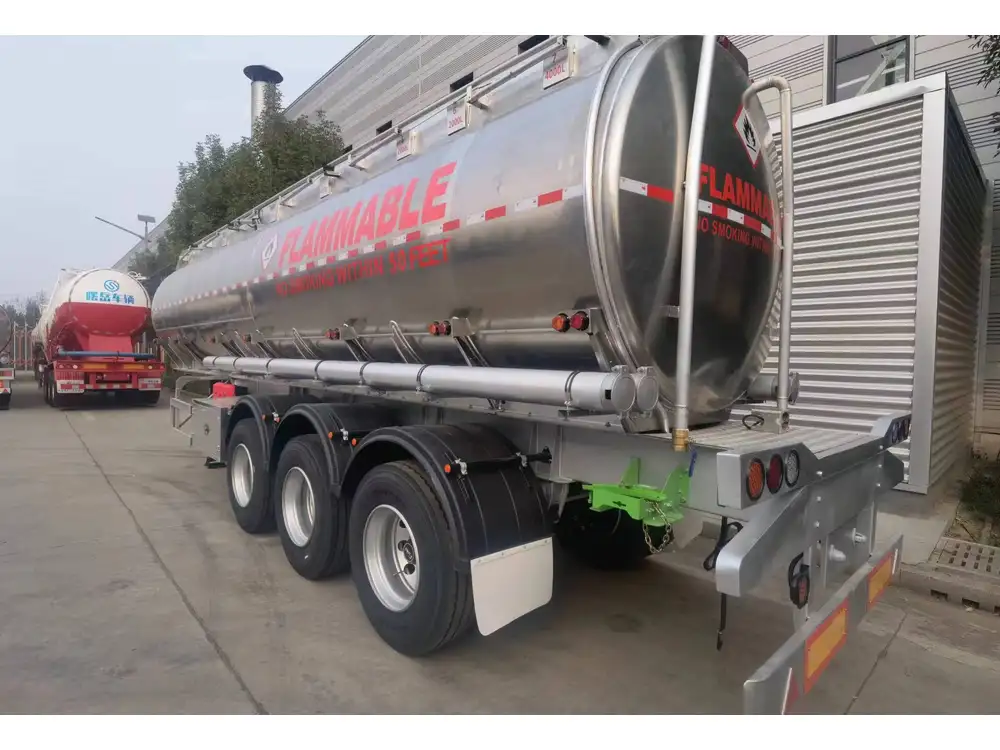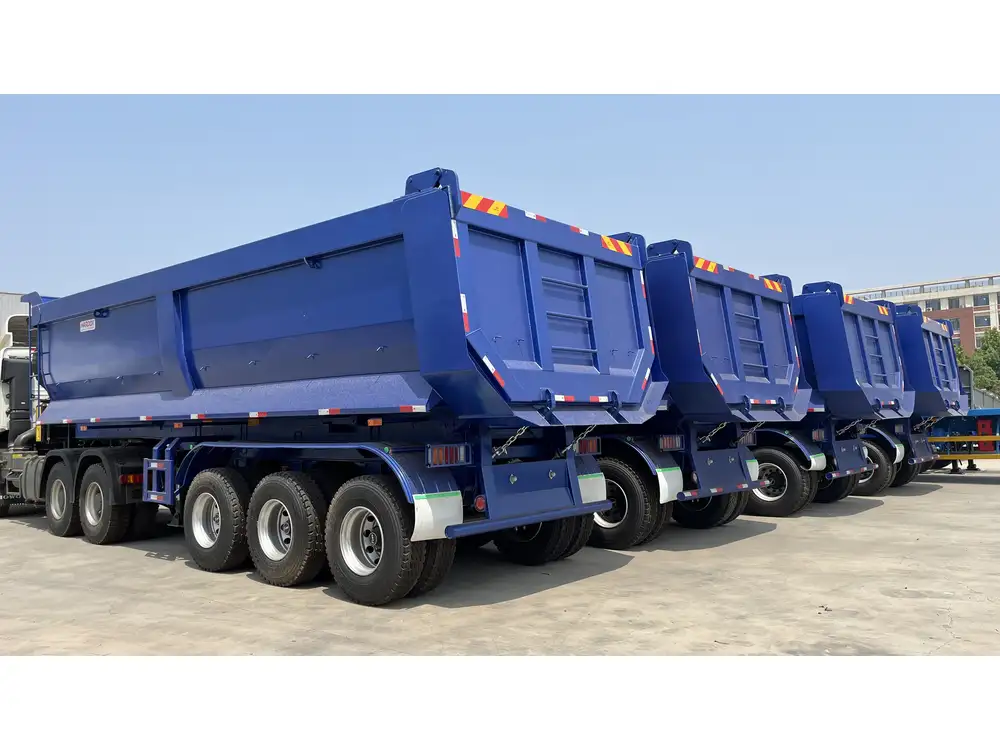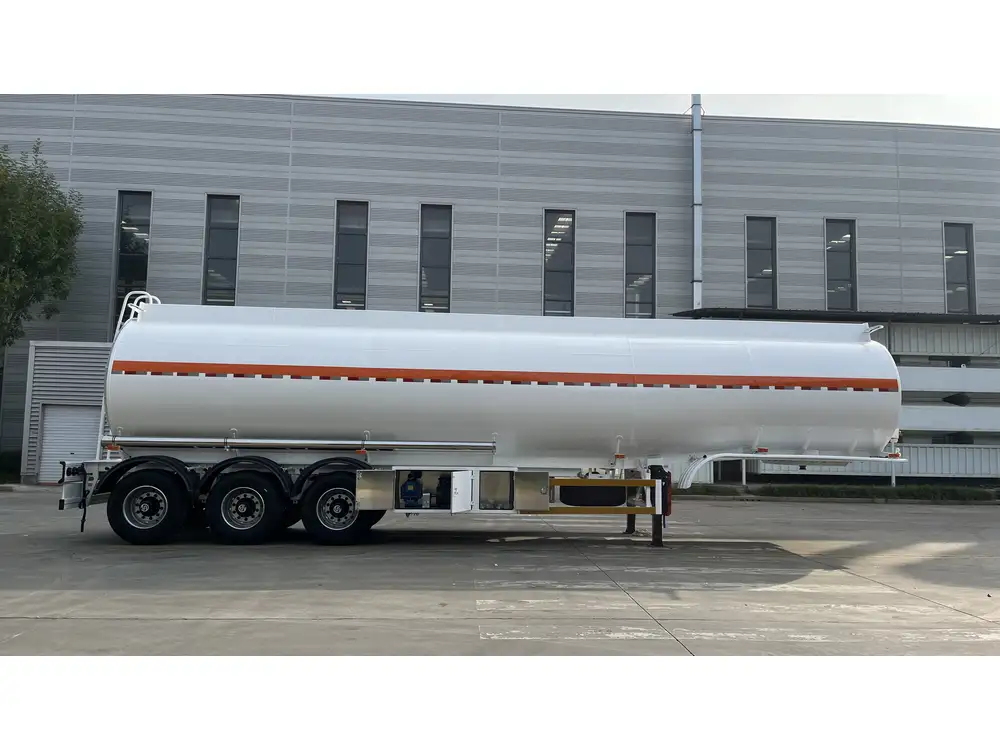Successfully connecting a semi-trailer to a truck is pivotal not just for transporting goods but also for ensuring safety on the road. This detailed guide is structured to equip you with the necessary knowledge and procedures to effectively hook up a semi-trailer with maximum efficiency and safety.
Understanding the Components Involved
Before diving into the process, let’s break down the main components involved in hooking up a semi-trailer:
| Component | Description |
|---|---|
| Fifth Wheel | A coupling mechanism that connects the truck to the trailer. |
| Kingpin | A metal pin on the trailer that locks into the fifth wheel. |
| Safety Chains | Chains that provide additional security to prevent trailer detachment. |
| Air Lines | Hoses that connect the truck’s air brake system to the trailer. |
| Electrical Lines | Wires that supply power to the trailer’s lights and brake systems. |
Step-by-Step Procedure for Hooking Up a Semi-Trailer

1. Pre-Hooking Inspection
Prior to any connection, a thorough inspection of both the truck and semi-trailer is essential. Here are the key areas to examine:
Truck Inspection
- Fifth Wheel: Check for wear and ensure there is adequate lubrication.
- Brake System: Confirm that the brakes are functioning properly.
- Lights: Verify that all lights work, including turn signals and brake lights.
Trailer Inspection
- Kingpin: Inspect for any signs of damage or excessive wear.
- Brakes and Tires: Ensure brakes are in working order, and tires are adequately inflated.
- Lights and Wiring: Check lights and ensure there is no frayed wiring.

2. Positioning the Truck
To align the truck with the trailer correctly, follow these steps:
- Approach Slowly: Drive the truck in a straight path toward the trailer.
- Use Mirrors: Utilize side and rearview mirrors to line up the fifth wheel directly above the kingpin.
- Adjust as Necessary: If the alignment is off, make minor adjustments until the truck is perfectly positioned.
3. Engaging the Fifth Wheel
Once aligned, begin the actual hooking-up process:
- Lower the Trailer: Ensure the trailer’s landing gear is appropriately lowered.
- Shift to Reverse: Gently back up the truck until the fifth wheel makes contact with the kingpin.
- Listen for the Click: A secure connection will produce a distinctive “click” sound indicating that the kingpin has locked into the fifth wheel.
4. Securing the Connection
After hooking up, it’s critical to secure the connection effectively:

Locking Mechanism
- Verify Engagement: Check the locking mechanism on the fifth wheel to ensure the kingpin is firmly locked in place.
Safety Chains
- Attach Safety Chains: Loop the safety chains from the trailer to the truck. Cross them beneath the hitch to create a cradle, which provides additional security.
5. Connecting the Air and Electrical Lines
The next step involves connecting air and electrical lines to ensure the trailer’s functionality:

Air Lines
- Identification: Locate the blue (supply) and red (emergency) air hoses on the trailer.
- Attachment: Connect these hoses to the corresponding ports on the truck, ensuring they click into place.
Electrical Lines
- Plugging In: Connect the electrical line from the trailer to the truck’s electrical port, ensuring a secure fit for proper lighting and signaling.
6. Final Safety Checks
It’s essential to perform a final inspection to ensure that everything is correctly set up before hitting the road. Execute these checks:

Connection Safety Check
- Wiggle Test: Gently shake the trailer to ensure it is firmly connected to the truck. There should be no movement.
- Brake Test: Conduct a quick brake test to confirm that the trailer’s brakes will engage effectively.
General Safety Check
- Lights Functionality: Confirm that all trailer lights, including turn signals and brake lights, are operational.
- Tires and Brakes: Double-check the trailer’s brakes and tires for any potential issues before departure.
Common Mistakes to Avoid
To ensure both safety and efficiency, be aware of the common pitfalls during the hooking-up process:
| Mistake | Consequence |
|---|---|
| Neglecting Pre-Hooking Inspection | Increases the risk of breakdown or accidents. |
| Incorrect Alignment Between Truck and Trailer | Can result in a missed connection, damaging components. |
| Failure to Secure Safety Chains | Endangers other road users in the event of disconnection. |
| Ignoring Brake and Lighting Functionality | Could lead to dangerous situations on the road. |

Additional Tips for Safe Hooking Up
- Check Your Surroundings: Always be aware of your surroundings for pedestrians and other vehicles while hooking up.
- Use Spotters When Available: Having a second person can help ensure alignment and provide assistance.
- Practice Makes Perfect: Regular practice and familiarity with the hooking-up process can greatly enhance safety and efficiency.
Conclusion: Best Practices for Hooking Up a Semi-Trailer
Successfully hooking up a semi-trailer involves a series of systematic steps designed to maximize safety and efficiency. From understanding the crucial components to executing detailed checks, meticulous attention to detail can prevent potential mishaps.
By adhering to these guidelines and best practices, drivers can ensure not only their safety but also that of other road users. Also, thorough preparedness and regular maintenance of both the truck and trailer are vital for longevity and reliability in transportation.
For those in the manufacturing or logistical sector, understanding these principles can not only elevate individual safety but can also enhance operational efficiency across the board. As always, continuous education and training in proper procedures will significantly reduce risks and improve overall performance on the road.
Frequently Asked Questions (FAQs)
What is the most critical step when hooking up a semi-trailer?
- The most critical step is ensuring proper alignment of the truck’s fifth wheel with the trailer’s kingpin.
How can I tell if my trailer is securely hooked up?
- A ‘wiggle test’ is effective; if the trailer does not sway or move when shaken, it is securely connected.
What should I do if I encounter issues while hooking up?
- Stop immediately and assess the issue. Make any necessary adjustments or repairs before proceeding.
Why are safety chains important?
- Safety chains act as a backup connection, preventing the trailer from completely detaching if the primary connection fails.
By following these extensive guidelines and keeping safety as a priority, semi-trailer operators can ensure smooth and secure transitions on the road ahead.



